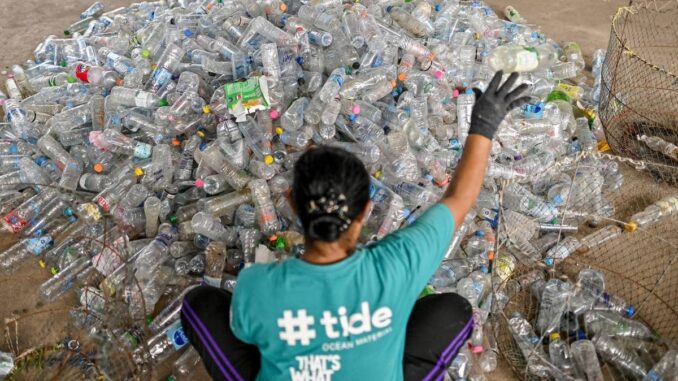
(UPDATE) PARIS — Microplastics have been found throughout the human body — including inside the lungs, blood and brains — and while it is not yet clear how harmful they are to our health, some researchers are sounding the alarm.
These tiny pieces of plastic have been detected almost everywhere on Earth, from the deepest oceans to the highest mountains, as well as in the air, water, soil and food chain.
Every day humans ingest, inhale, or otherwise come in contact with microplastics, which are less than 5 millimeters (0.2 inches) and mostly invisible to the naked eye.
“A human in 2024 has plastic in almost all the organs of their body,” French specialist researcher Fabienne Lagarde recently told a hearing of France’s parliament.
“And it will probably be even worse for the children born in 2040,” she added.
Numerous studies have linked the presence of microplastics — or nanoplastics, which are 1,000 times smaller — to a range of health problems.
In March, a study in the New England Journal of Medicine found an association between microplastics accumulating in people’s blood vessels and an increased risk of heart attack, stroke or even early death.
‘Red flag’
“The body of research on microplastics is growing, and it is already showing us that the health impacts are very concerning,” said Tracey Woodruff, a researcher at the University of California, San Francisco.
Woodruff recently conducted a systematic review of 2,000 previous studies on animals, finding that microplastics “can harm fertility, are linked to increased cancer risk and can harm respiratory health,” she told Agence France-Presse.
It is a “red flag” that microplastics have been found in so many areas of the body, “including the brain, testes, and even crossing the placenta into the fetus,” she added.
Many of the most worrying studies, such as the one from March, have been observational. This means they cannot prove microplastics are directly causing the health problems they have been linked to.
Others have been conducted in the lab, sometimes testing on animals, which some observers see as a limitation.
For the studies she reviewed, Woodruff said the biological systems of the animals were “quite similar to humans.”
She added that “data from animals has been used to identify carcinogens and reproductive toxicants for decades.”
Many things remain unknown about how microplastics could affect health, including the role played by their size, shape and composition.
Many plastics are a complex cocktail of polymers and chemicals, and there are fears they could smuggle in other contaminants in what is called the “Trojan Horse” effect.





Be the first to comment